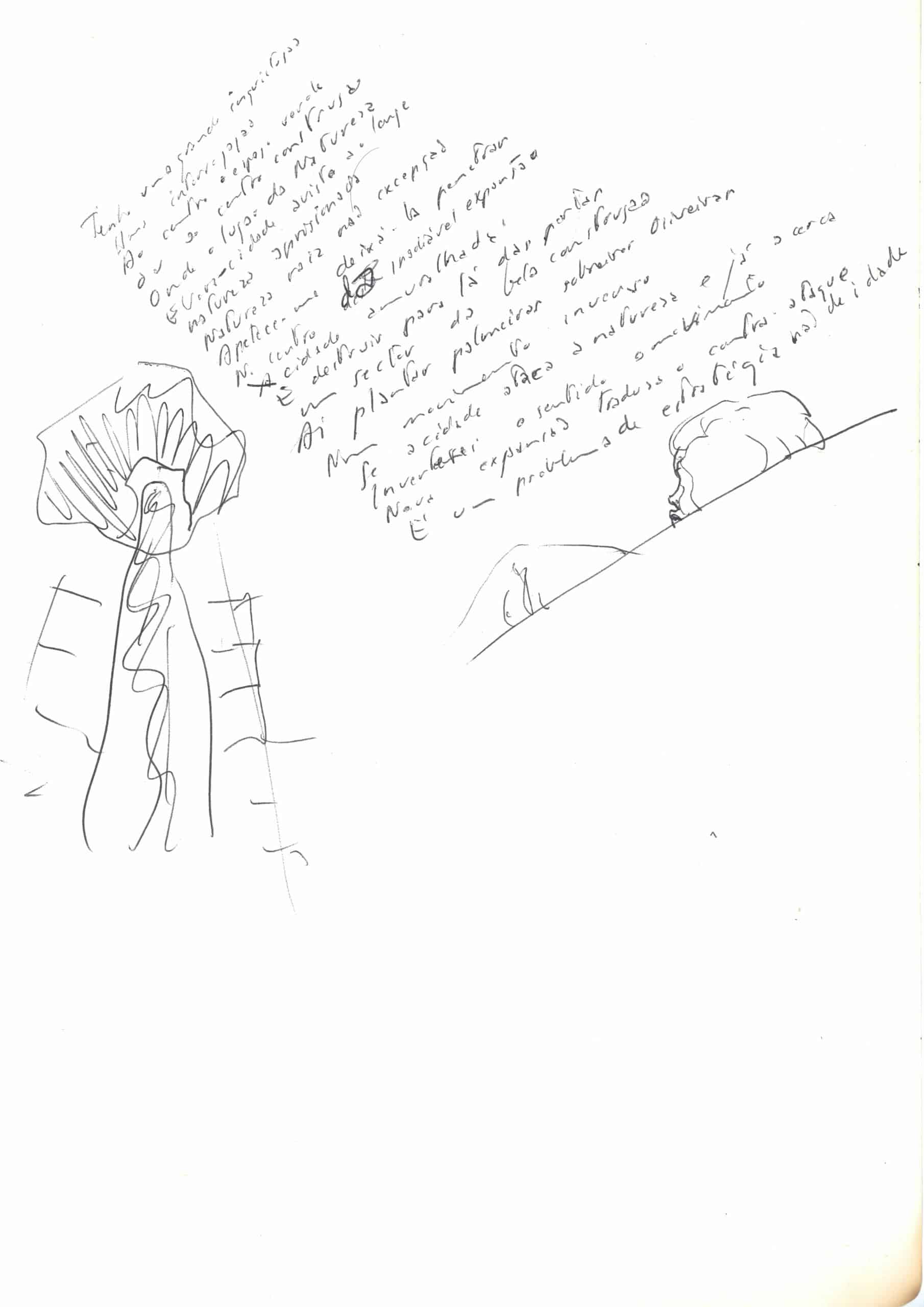About Malagueira: Siza’s Poem on Page 27 of Sketchbook 01
The following translation proposed for Álvaro Siza’s writings on page 27 of his sketchbook 01 in Drawing Matter Collections is part of an ongoing investigation into the Malagueira project at DA/UAL PhD Programme in Contemporary Architecture.
Siza’s sketchbooks are a precious tool for understanding his work and interpreting his concerns. It is important to know that he began to use sketchbooks in 1977, when he started working in Malagueira: it was the first time he was engaged in a project far from Porto. Going through its pages, among many drawings and small notations, we find small texts written as something like poems. Like all pages of his sketchbooks, they are very private and intimate, but really show what was going through his mind, what matters he was pursuing.
In Malagueira, he was dealing with the question of building a new town outside a historic city on former agricultural land. Visiting the place, he saw a space between two roads crossing the city’s ancient walls, connecting to the main square, looking towards Évora at the top of the hill among Alentejo’s great plains. There he would find the remains of previous agricultural activity, pre-existing illegal neighbourhoods and an ongoing high-density housing estate. But reading page 27 of sketchbook 01, we discovered a new element that was central to Malagueira’s project, probably the most important pre-existing one, Nature.
His writings speak about the relation between natural space and built space, thinking which should occupy the central part of the project. He weighs the importance of buildings like Évora’s monuments: its churches, convents, walls and aqueduct, and the need for green space in a consolidated and historic urban fabric. And at the end of the text, the drawing of maybe an angel looks to the anthropomorphic scheme of his vision on the site.
And I can’t help wondering, was Álvaro Siza thinking of ecology or sustainability?
Portuguese version
Tenho uma grande inquietação
uma interrogação
ao centro o espaço verde
ou o centro construção
onde o lugar da Natureza
Évora cidade avisto ao longe
Natureza aprisionada
Natureza raiz na excepção
Apetece-me deixá-la penetrar
No centro da inadiável expansão
Cidade amuralhada
E destruir para lá das portas
Um sector da bela construção
Aí plantar palmeiras sobreiros oliveiras
Num movimento inverso
Se a cidade ataca a Natureza e já a cerca
Invertirei o sentido, o movimento
Nova expansão traduza o contra-ataque
É um problema de estratégia, não de idade
Álvaro Siza in Caderno 01 págine 27
English translation proposal
I have a great restlessness
An interrogation
At the centre is the green space
Or the built centre
Where from the place of Nature
Évora city is seen from afar
Nature is imprisoned
Nature rooted in exception
I would like to let it penetrate
To the centre of the inexorable expansion
A walled city
And destroy beyond the gates
A sector of the city’s beautiful construction
There plant palm cork olive trees
In an inverse movement
If the city attacks Nature and already surrounds it
I will reverse the sense the movement
Making a new expansion that translates the counter-attack
It is a problem of strategy not age


– Manuel Montenegro